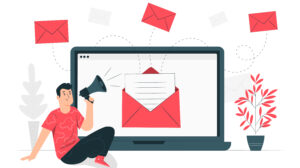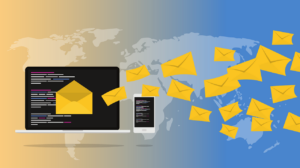We all have had a hate and love relationship when it comes to email marketing. Sometimes we love the companies for sending us amazing offers and sometimes we hate the other companies for spamming us with unnecessary emails. Email marketing has the potential to become one of the most fool-proof ways of getting into a customer’s head. However, a lot of brands are doing email marketing the wrong way.
Companies that are small startups need to pay attention to building a customer base and starting from scratch so that they can create strong and loyal brand value. This is why it is necessary to use email marketing in such a way that you do not push target customers away.
E-marketing campaigns have the potential to be highly customized. When done in the right manner email marketing services can be used to retain as well as acquire customers. It is important that the message that is passed on to users feels personal and brings them value rather than promoting a new product.
Let’s move forward and have a look at some of the strategies that will help you to indulge in the right type of *e-marketing.
1. Collecting customer data
This is one of the most crucial things to do when it comes to email marketing. Before you start sending out emails you need do proper market research and collect certain specific data from your consumers. This will help you to determine what type of segment your customers like. It will also help you target customers and figure out what type of emails they find more appealing.
This is called creating a buyer’s persona and allows you to see things from the customer’s perspective so that you can decide what types of email would be appealing to them. It is important to know the difference, for example, of marketing to a 20-year-old girl versus a 70-year-old lady.
Bio personas also help you to build and design a site that can attract the right type of users. You can custom craft your emails by keeping your target audience in mind.
2. Micro-segmentation
As noted above, it is very important to conduct extensive research and analysis of your target audience, but before you start sending out marketing emails, you need to divide your audience on the basis of shared characteristics. This will make it easy for you to target customers and approach them based on their common taste.
Micro-segmentation exactly involves this. It includes breaking down segments into smaller ones so that you can get more specific with your marketing strategies. Micro-segmentation can save a lot of time when it comes to selecting the type of audience you need to reach out to.
3. Keep the content brief
Once you have acquired detailed insights about your target audience, it’s time to showcase what you have to offer. You may want to create marketing emails that swamp your readers with information and advice about the services and products your company provides.
It is not recommended, however, that you do this. It is essential to keep the content of your emails brief and to the point. Make sure that your emails are focused and cut right to the chase. The more straightforward your emails, the more valuable they will be.
No customer wants to scroll endlessly to discover the gist of your content. Remember that valuable content means nothing if customers don’t read it.
4. Offer extra value
As you compose your mail, your main agenda should be providing value to customers rather than making a sale. If your emails turn out to be too promotional, chances are customers will turn away. When customers sign up for your newsletter, it’s likely that they were looking for valuable information and insights. As a startup, it is up to you to meet their expectations.
For example, you can start by giving them a 15% off discount code as a reward for their sign up or you could give some freebies on their first order. This will really grab their attention and grow your email list significantly. Make sure you do giveaways of products that include stuff that is related to your target audience.
Another option is to attach a free ebook to your emails which may be helpful for your target audience. Or, you can offer a free consultation and share a useful blog post that could guide your customers and answer any of the questions that they might have. The main aim is to make your customers feel like they have gained some information or value from the email they have received.
5. Have a clear objective
It is also very important to outline the purpose of your email marketing campaign. For instance, you need to decide what you want to do – increase your sales, give gentle reminders to customers, encourage them to take any action or simply drive more visitors to your website and blog.
Email marketing is a great way to engage with your customers and provide them with the content they want. Make sure you alert them every time you post new content, offers or launch something new. You need to attract a significant number of users to your website for quality lead generation.
What did we learn?
Creating a user-friendly email marketing experience is never easy. It takes a lot of research to understand the audience you are targeting. You might also have some negative experiences such as users unsubscribing because they find your emails too distracting. In any case, you should not lose hope or give up.
Email marketing is still one of the most effective ways of reaching out to new customers and retaining old ones. As we all know, a lot of effort goes into crafting the perfect email, but email marketing works wonders for every type and size of business.
By dividing your target audience into tiny segments based upon acquired customer data, you can create buyer personas. Write brief and customized emails that provide personal value to every customer and ensure the email carries credible information.





